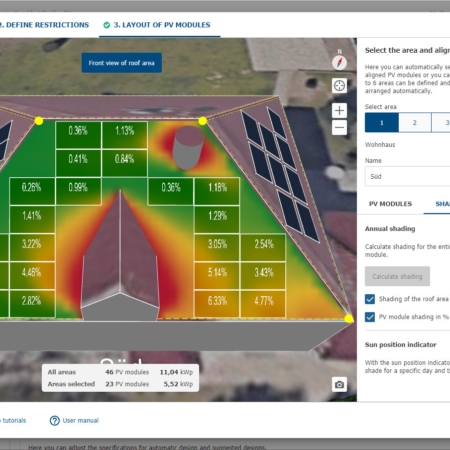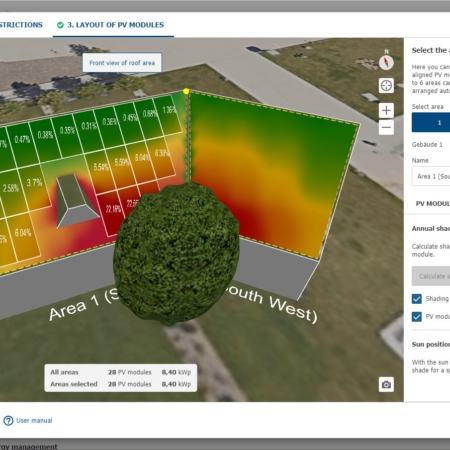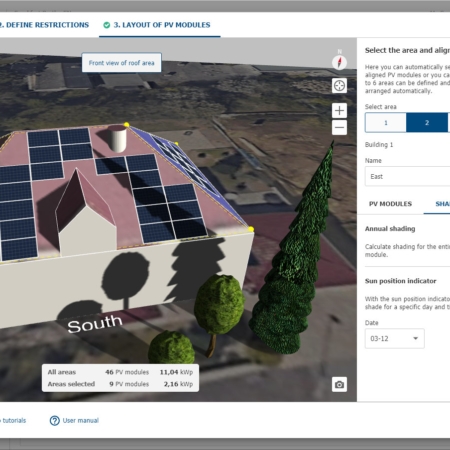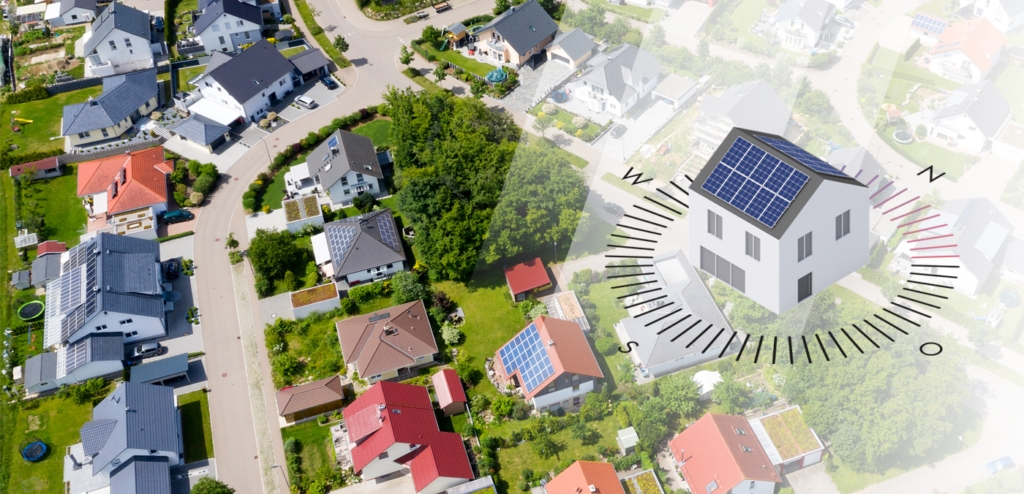No fear of shading on PV systems

The Sunny Design planning software has been used to plan millions of PV systems worldwide since 2007. The new release lets you precisely model where shading might be on the modules and shows you where direct irradiation is lost.
Are you designing PV systems for your customers, but would-be shadow casters like trees, dormers or tall buildings keep interfering with your plans? Starting right now, the new features of the Sunny Design planning software let you take a very close look. You can build all kinds of scenarios in a 3D simulation and quickly see whether the planned new building next door or a tree on the neighbor’s property will even be a problem for the PV system. That means you can also successfully prevent fights among neighbors, prematurely felled trees and similar tragedies. ?
Planning PV systems for the future
“The 5.20 release allows system designers to precisely simulate objects like trees, dormers, chimneys or tall buildings,” said Thomas Straub, Product Manager at SMA. “Sunny Design then simulates the shading situation at the desired location for any time of the year. This allows system designers and installers to know exactly where shading is not much of an issue or where it would be better not to place a module at all.”
The software can even simulate and factor in a tree’s growth or the planned home on the neighbor’s property. “These simple tools allow installers to optimally spread out the PV modules on the available space and offer their customers competent advice instead of merely rushing to sell a PV system,” said Straub, describing one of the benefits for customers. This strengthens customer relationships and increases the likelihood of referrals to neighbors. The process is easy:
- Analyze shading for a roof area and modules
Select the roof area in the object you created and arrange the modules. You can also have the software arrange the modules for you automatically.
Sunny Design then calculates the shading for the entire year and the shading on each individual PV module as a percentage. You can tell from the results whether the impact of shading would be large or small.
Figure 1 and 2: Sunny Design precisely simulates objects like trees, dormers or chimneys at the desired location. - Follow the sun’s position and simulate shadows:
You can have the sun position indicator show you exactly where a shadow moves at a given time. Simply select a certain date and time. The software will show you when a planned module is going to be shaded, what it will be shaded by and how this will change in the course of the day depending on the season.
Figure 3: Sunny Design shows exactly where a shadow moved at a given time.
The new Sunny Design features enable you to plan systems that are tailored to local conditions in even greater detail. Now, modules that might not have been installed before may turn out to be profitable after all. You can position yourself as an expert in PV system planning, while your customers enjoy greater yields.
By the way, it takes only a few moments to get the calculations in Sunny Design. Customer satisfaction, on the other hand, will last the entire life of the PV system.
Join our free webinar on Sunny Design at the Solar Academy:
Sunny Design: Basics of plant design | SMA Solar Academy, September 14, 2021
Read more articles about Sunny Design in the blog series:
How to design East/West polystring PV arrays. The SMA Corporate Blog (sma-sunny.com)
In our next article, you will discover why it pays off to install a system on the north side of the roof.





Feel free to contribute!